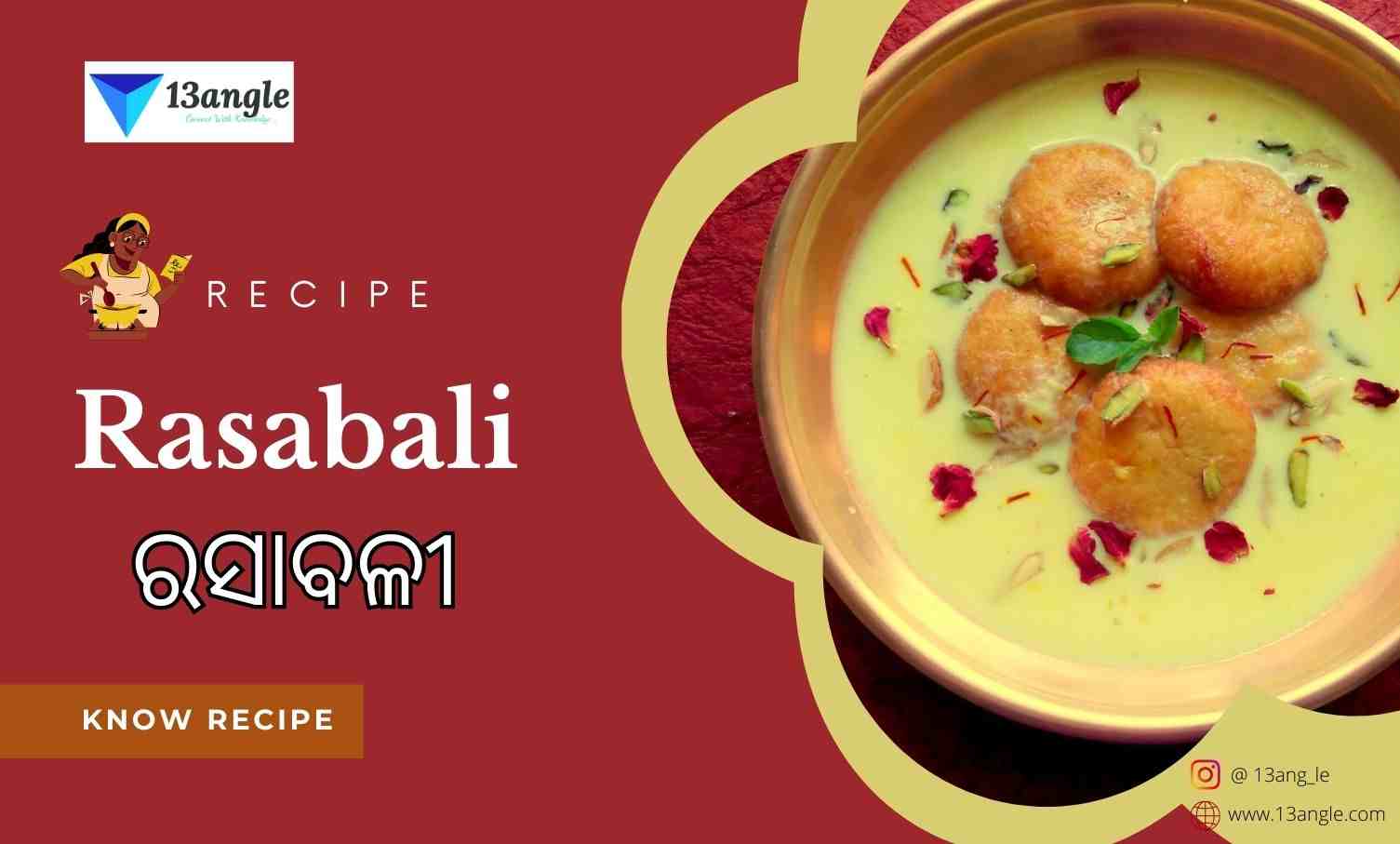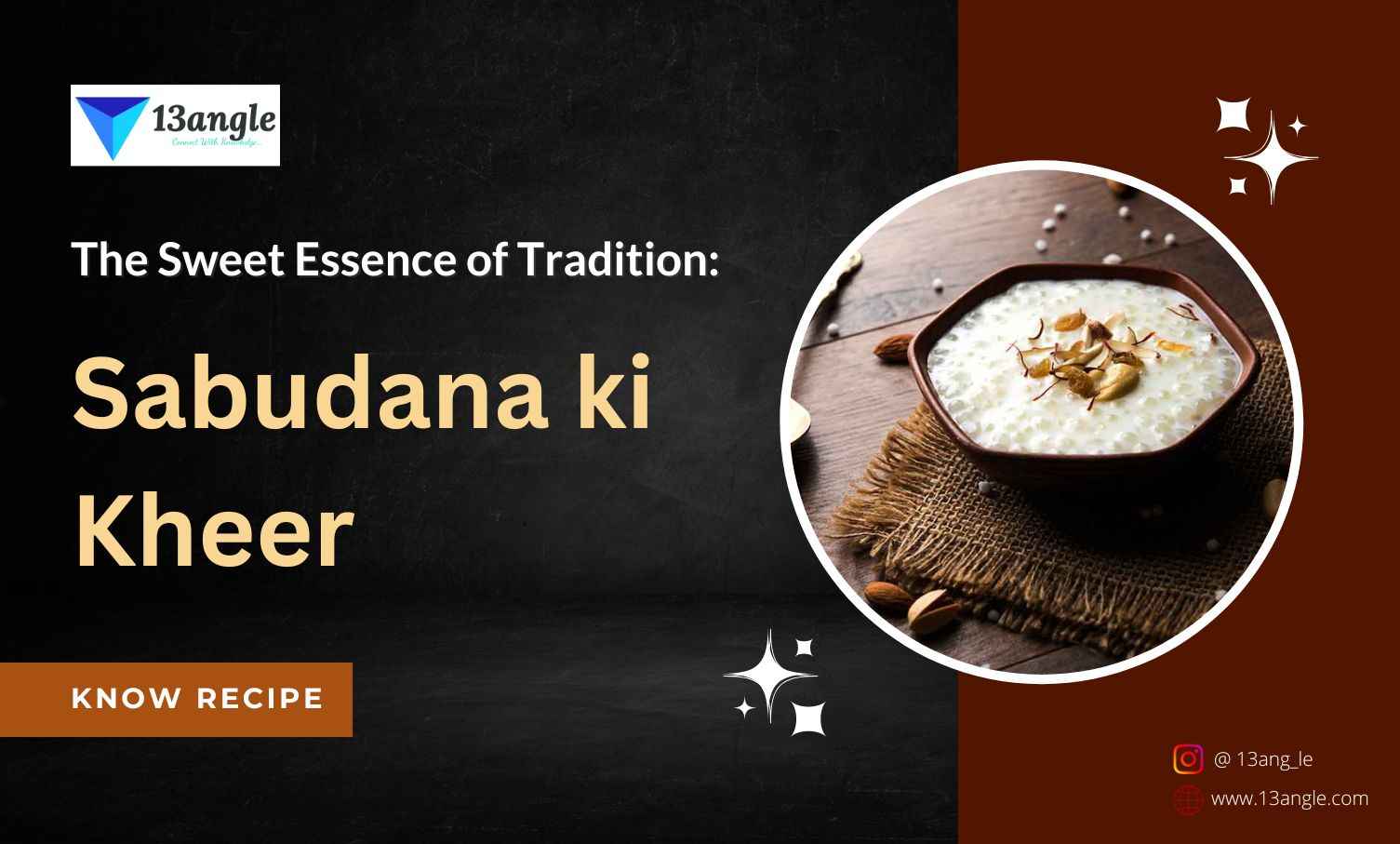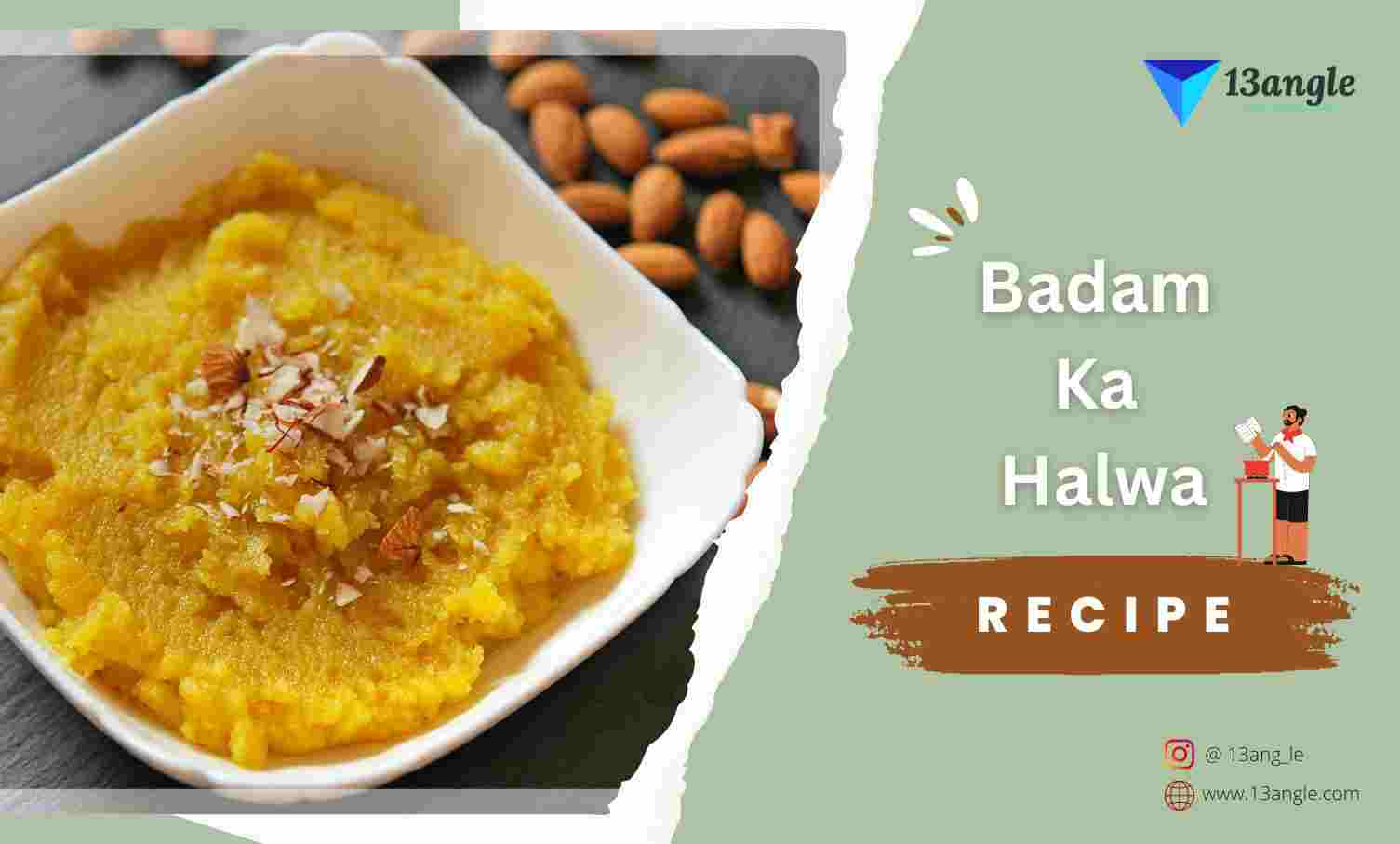
Introduction
Vegetable Biryani is a delectable and aromatic rice dish that has its roots in the rich culinary heritage of the Indian subcontinent. As a vegetarian variation of the traditional Biryani, it has become a popular and cherished choice among those who prefer meat-free options or follow a vegetarian diet. This flavorful and visually appealing dish showcases a harmonious blend of fragrant Basmati rice, an assortment of colourful vegetables, and an exquisite medley of aromatic spices.
The origins of Biryani can be traced back to ancient Persia, where it was known as “Beryān” or “Beryāni.” Over the centuries, this culinary treasure made its way to the Indian subcontinent through trade and cultural interactions, evolving into a luxurious and flavorful rice delicacy. The Mughal influence during their reign in India further refined the art of making Biryani, making it an integral part of the subcontinent’s gastronomic tapestry.
Vegetable Biryani has embraced the culinary diversity of India, with different regions adding their own unique twists and variations to the dish. From the iconic Hyderabadi Vegetable Biryani with its Nizami heritage to the vibrant Kashmiri Vegetable Biryani with its array of dried fruits and nuts, each region boasts its distinct interpretation, tailored to suit local tastes and ingredients.
The hallmark of a well-made Vegetable Biryani lies in the layering technique, where partially cooked Basmati rice is alternated with a flavorful vegetable curry, allowing the flavours to mingle and infuse during the dum cooking process. The result is a symphony of tastes and textures, with the rice grains perfectly separated and the vegetables tender and aromatic.
Whether served at festive celebrations, family gatherings, or enjoyed as a delightful weeknight treat, Vegetable Biryani never fails to captivate the senses and bring joy to the palate. Its enchanting blend of spices and wholesome vegetables makes it a favourite not just among vegetarians but among food enthusiasts worldwide.
Indeed, Vegetable Biryani is a culinary masterpiece that represents the rich heritage of Indian cuisine, where the art of blending flavours and creating soul-satisfying dishes has been perfected over generations. With its timeless appeal and irresistible taste, Vegetable Biryani continues to be a treasured and cherished dish, embodying the spirit of Indian hospitality and gastronomic excellence.
History And Origin
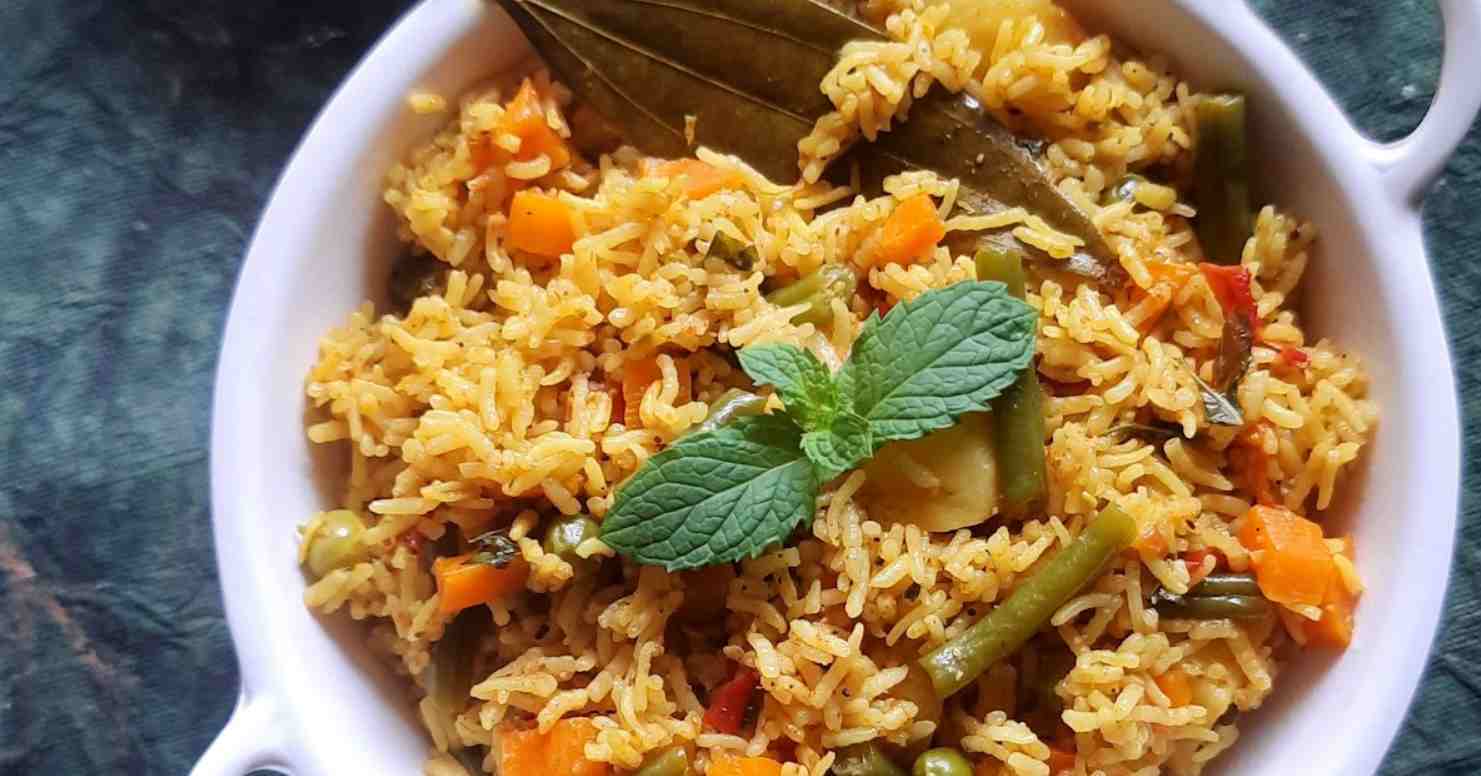
The history and origin of Vegetable Biryani are closely intertwined with the evolution of traditional meat-based Biryani. Biryani is a flavourful and aromatic rice dish that is believed to have originated in South Asia, particularly in the Indian subcontinent. While the exact origin is a matter of debate, Biryani’s roots can be traced back to ancient Persia and Arabia.
Origin and Evolution:
Biryani has its origins in the Persian dish “Beryān” or “Beryāni,” which was a rice-based dish made with meat, rice, and various aromatic spices. It is said that Persian traders and travellers brought this dish to the Indian subcontinent, where it underwent several transformations over centuries.
In India, Biryani developed into various regional styles based on local ingredients, culinary traditions, and the influence of different cultures. The Mughal Empire, which ruled a significant part of the Indian subcontinent from the 16th to the 19th century, played a crucial role in popularizing Biryani.
The Mughals were known for their extravagant and lavish culinary tastes, and they greatly contributed to the refinement and popularity of Biryani. They brought their own techniques and recipes from Central Asia and combined them with Indian flavours and ingredients. During their rule, Biryani evolved into a luxurious and aromatic rice dish that featured various types of meat, such as chicken, and mutton.
Vegetable Biryani Emergence:
While Biryani predominantly featured meat, the vegetarian version, known as Vegetable Biryani, emerged to cater to the dietary preferences of those who abstained from consuming meat due to cultural, religious, or personal reasons.
Vegetable Biryani uses a variety of vegetables, such as carrots, beans, peas, potatoes, and sometimes paneer (Indian cottage cheese), combined with aromatic spices, fragrant Basmati rice, and other traditional Biryani ingredients. It is prepared using the same techniques as non-veg Biryani, including layering and dum cooking.
The popularity of Vegetable Biryani grew over time as more people embraced vegetarianism and sought vegetarian alternatives to their favourite dishes. Today, Vegetable Biryani is a widely loved and sought-after dish, both in India and around the world, especially in regions with a significant vegetarian population.
Recipe For Making Delicious Vegetable Biryani
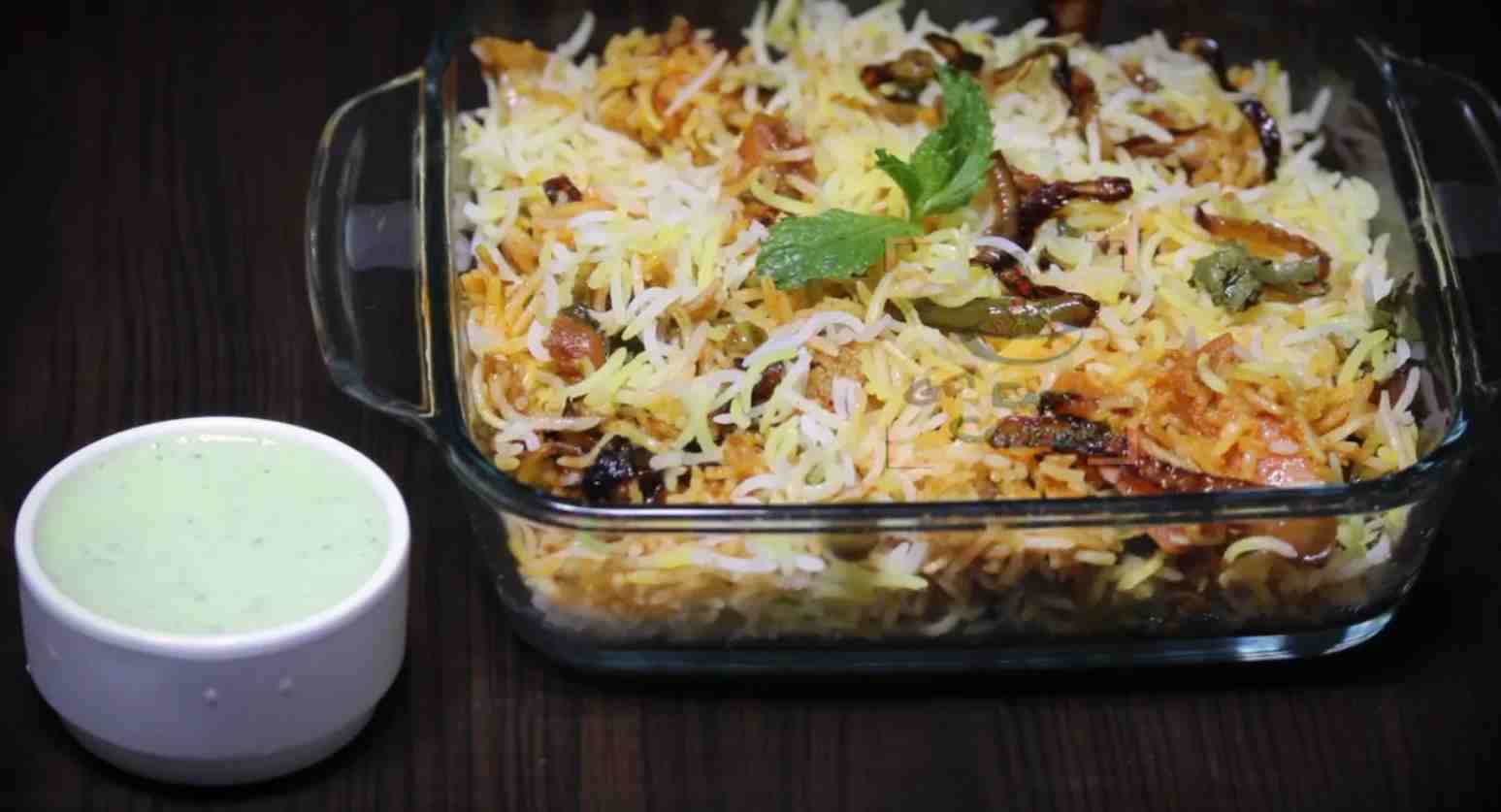
Ingredients:
For Rice:
- 2 cups Basmati rice (soaked in water for 30 minutes and drained)
- 4 cups water
- 1-inch cinnamon stick
- 4-5 green cardamom pods
- 4-5 cloves
- 1 bay leaf
- 1 teaspoon cumin seeds
- Salt to taste
For Vegetable Curry:
- 2 cups mixed vegetables (carrots, beans, peas, potatoes, etc.), chopped
- 1 large onion thinly sliced
- 2 medium tomatoes chopped
- 1/2 cup plain yoghurt
- 1/4 cup chopped mint leaves
- 1/4 cup chopped cilantro (coriander) leaves
- 1/4 cup fried onions (optional, for added flavour)
- 1/4 cup cashew nuts (optional, for richness)
- 2 tablespoons ghee (clarified butter) or vegetable oil
- 1 tablespoon ginger-garlic paste
- 1-2 green chillies slit (adjust to your spice preference)
- 1 teaspoon cumin powder
- 1 teaspoon coriander powder
- 1/2 teaspoon turmeric powder
- 1/2 teaspoon red chilli powder (adjust to your spice preference)
- 1/4 teaspoon garam masala
- Salt to taste
For Biryani Layering:
- Saffron strands soaked in 2 tablespoons of warm milk (for the saffron milk)
- Few drops of rose water (optional)
- 2 tablespoons ghee (clarified butter) or vegetable oil
Instructions:
- Prepare the Rice:
- In a large pot, bring 4 cups of water to a boil. Add the soaked and drained Basmati rice to it.
- Add cinnamon sticks, green cardamom pods, cloves, bay leaf, cumin seeds, and salt.
- Cook the rice on medium heat until it’s about 70% cooked. It should still have a slight bite to it. Drain the water and set the rice aside.
- Prepare the Vegetable Curry:
- Heat ghee or vegetable oil in a heavy-bottomed pan or pot over medium heat.
- Add the sliced onions and sauté until they become golden brown.
- Add the ginger-garlic paste and green chillies. Sauté for another minute.
- Add the chopped tomatoes and cook until they become soft and mushy.
- Now, add the mixed vegetables and cook for 5-7 minutes until they are partially cooked.
- Stir in the cumin powder, coriander powder, turmeric powder, red chilli powder, and salt. Mix well.
- Add the plain yoghurt, chopped mint leaves, chopped cilantro leaves, and fried onions (if using). Mix everything together.
- Cover the pan and let the vegetable curry cook on low heat for another 10-15 minutes until the vegetables are tender and flavours are well incorporated.
- Sprinkle garam masala over the curry and mix. Turn off the heat and set the vegetable curry aside.
- Layering the Biryani:
- In a large heavy-bottomed pot, spread a layer of vegetable curry at the bottom.
- Place a layer of partially cooked rice on top of the vegetable curry.
- Repeat the layers, alternating between the vegetable curry and rice. Ensure the top layer is rice.
- Drizzle the saffron milk and rose water (if using) over the top layer of rice.
- Dot the surface of the rice with ghee or vegetable oil to keep it moist and flavourful.
- Cover the pot with a tight-fitting lid or seal it with aluminium foil.
- Dum Cooking (Slow Cooking):
- Place the biryani pot on a tava (griddle) on low heat to create a heat source from the bottom.
- Allow the biryani to cook on low heat for 25-30 minutes. Alternatively, you can place a heavy tava/griddle directly under the pot and cook on low heat for the same amount of time. This process is called “dum cooking” and allows the flavours to meld together.
- Serve:
- Once the biryani is done cooking, gently fluff up the rice with a fork, being careful not to break the grains.
- Serve hot with raita (yoghurt dip), salad, or your favourite side dishes.
Enjoy your delicious and flavourful Vegetable Biryani! It’s a perfect dish for special occasions or when you want to treat yourself to a scrumptious meal.
Types Of Vegetable Biryani You Can Make
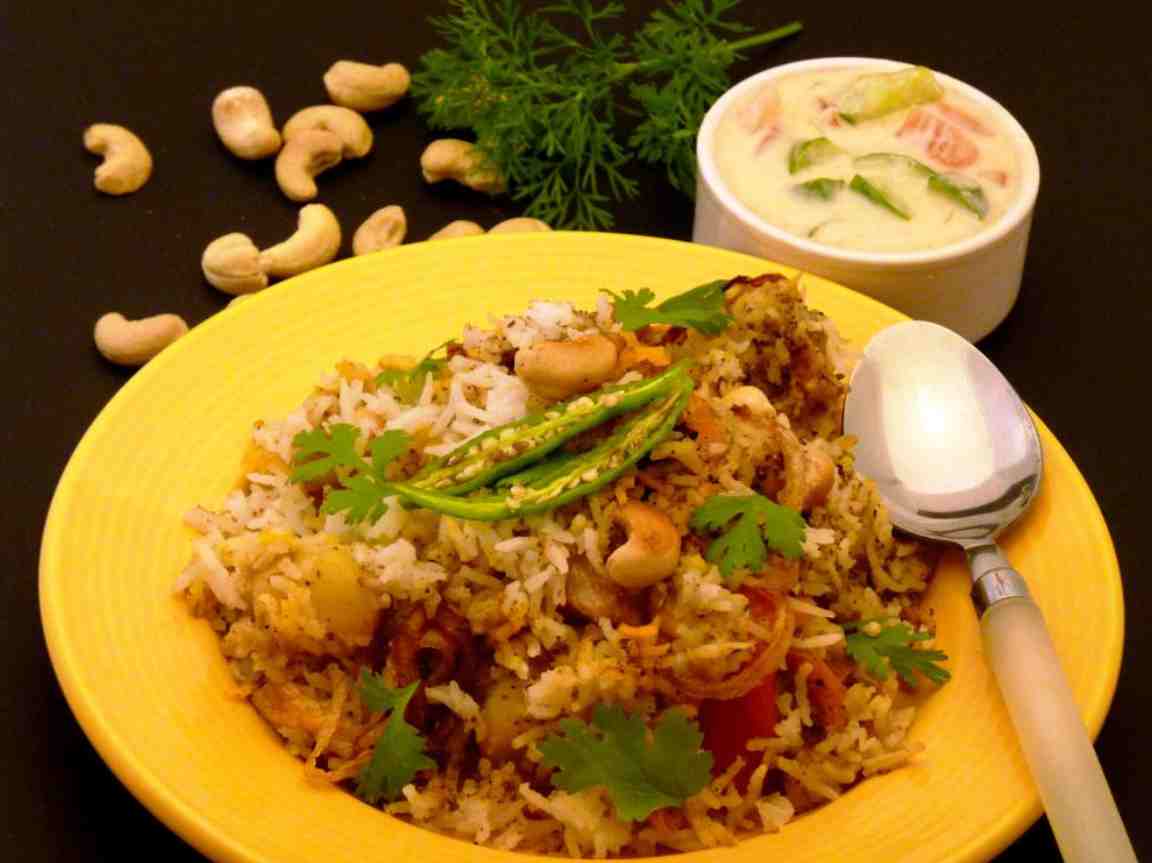
There are numerous types of Vegetable Biryani you can make, each with its own unique combination of vegetables, spices, and cooking techniques. Here are some popular types of Veg Biryani:
Vegetable Dum Biryani: This is a classic version of Vegetable Biryani, where layers of partially cooked rice and vegetable curry are assembled in a pot and cooked in dum style, allowing the flavours to meld together.
Hyderabadi Vegetable Biryani: Inspired by the famous Hyderabadi Biryani, this version features fragrant Basmati rice layered with a flavourful mix of vegetables and aromatic spices.
Mughlai Vegetable Biryani: This rich and creamy Biryani is prepared with a mix of vegetables cooked in a creamy sauce made with yogurt, nuts, and aromatic spices.
Kashmiri Vegetable Biryani: Known for its vibrant colours and sweet-scented flavours, this Biryani includes a mix of vegetables, nuts, and dried fruits, such as raisins and apricots.
Chettinad Vegetable Biryani: Hailing from the Chettinad region in Tamil Nadu, this Biryani is known for its robust and spicy flavours, with a mix of vegetables and Chettinad spice blend.
Sindhi Vegetable Biryani: A popular dish from the Sindhi cuisine, this Biryani features a medley of vegetables, yogurt-based curry, and is garnished with fried onions and mint leaves.
Kerala Vegetable Biryani: This Biryani is influenced by the flavours of Kerala and often includes coconut milk, curry leaves, and a unique spice blend to create a distinct taste.
Lucknowi Vegetable Biryani: Inspired by the culinary traditions of Lucknow, this Biryani is known for its delicate flavours, tender vegetables, and fragrant rice.
Kolkata Vegetable Biryani: A specialty of Kolkata, this Biryani is lighter on spices and includes potatoes along with a mix of vegetables.
Indo-Chinese Vegetable Biryani: A fusion version that combines the flavours of Indian Biryani with Chinese stir-fried vegetables and sauces.
Green Vegetable Biryani: In this variation, the vegetables are marinated in a green herb and spice paste before being layered with rice, giving the Biryani a refreshing taste.
Paneer Vegetable Biryani: This version includes paneer (Indian cottage cheese) along with vegetables, adding a creamy and luxurious element to the dish.
Jain Vegetable Biryani: A variation suitable for those following a Jain diet, which excludes root vegetables and certain spices, but still results in a flavourful Biryani.
Top 13 Interesting Facts About Vegetable Biryani
Origin: Vegetable Biryani, as a vegetarian variant of the traditional Biryani, originated in the Indian subcontinent, where the popularity of vegetarian cuisine is widespread.
Aromatic Rice: Basmati rice is commonly used in Vegetable Biryani for its distinct aroma, long grains, and fluffy texture.
Spice Blend: The key to the rich flavor of Vegetable Biryani lies in the unique blend of spices, including cumin, coriander, cinnamon, cloves, cardamom, and more.
Regional Variations: Different regions in India have their own variations of Vegetable Biryani, incorporating local ingredients and cooking styles.
Dum Cooking: Like traditional Biryani, Vegetable Biryani is often cooked using the “dum” method, where the pot is sealed to trap steam, allowing the flavors to infuse into the rice and vegetables.
Hyderabadi Influence: Hyderabad, a city in India, is famous for its delicious Biryani. The Hyderabadi Vegetable Biryani is a popular variation that showcases the Nizami culinary heritage.
Nutrition: Vegetable Biryani is not only tasty but also nutritious, as it combines a variety of vegetables that offer essential vitamins, minerals, and fiber.
Festive Delicacy: Vegetable Biryani is a favorite dish during festive occasions, weddings, and celebrations in India, where it is often served as a main course.
Accompaniments: It is commonly served with raita, a yogurt-based side dish, to complement the spiciness of the Biryani.
Fusion Variants: Over time, Vegetable Biryani has been adapted and fused with other cuisines, resulting in creative versions like Indo-Chinese Vegetable Biryani.
Street Food: You can find vendors and small eateries across India serving flavorful and affordable Vegetable Biryani as a popular street food.
Worldwide Popularity: With the increasing popularity of Indian cuisine globally, Vegetable Biryani has become a sought-after dish in restaurants and homes worldwide.
Vegan-Friendly: Vegetable Biryani can easily be made vegan by substituting ghee with vegetable oil and skipping any dairy-based ingredients.
Frequently Asked Questions (FAQ) About Veg Biryani
Vegetable Biryani is a flavourful and aromatic rice dish made with Basmati rice, assorted vegetables, and a blend of aromatic spices. It is a popular vegetarian variant of the traditional Biryani.
Yes, Vegetable Biryani can easily be made vegan by using vegetable oil instead of ghee and ensuring that all ingredients, including yoghurt, are plant-based.
Commonly used vegetables in Vegetable Biryani include carrots, beans, peas, potatoes, cauliflower, and bell peppers, but you can use any vegetables of your choice.
Yes, frozen vegetables can be used in Veg Biryani. However, it is recommended to thaw them before cooking to ensure even cooking.
To prevent the rice from becoming mushy, partially cook the rice before layering it with vegetable curry. The rice should still have a slight bite to it before it goes for dum cooking.
Yes, you can make Veg Biryani in a pressure cooker. Follow the same layering process and cook on low flame after the first whistle for about 10-15 minutes without pressure.
Achieve the perfect spice balance by using quality spices and adjusting the quantities according to your taste preferences. Taste the vegetable curry before layering to ensure the right level of spiciness.
Absolutely! Paneer (Indian cottage cheese) is a wonderful addition to Veg Biryani. Cut it into cubes and layer it with the vegetables and rice for a delightful treat.
Yes, you can prepare the vegetable curry and rice in advance and refrigerate them separately. Assemble the layers just before dum cooking for the best results.
Vegetable Biryani can be stored in the refrigerator for up to 3-4 days if properly stored in an airtight container.
Yes, you can freeze Vegetable Biryani for up to 2-3 months. Divide it into portions and store in freezer-safe containers.
Yes, you can reheat Vegetable Biryani in the microwave or on the stovetop. Add a splash of water or sprinkle some water on top to retain moisture.
Vegetable Biryani pairs well with raita (yogurt dip), cucumber salad, or a simple side of plain yogurt.
